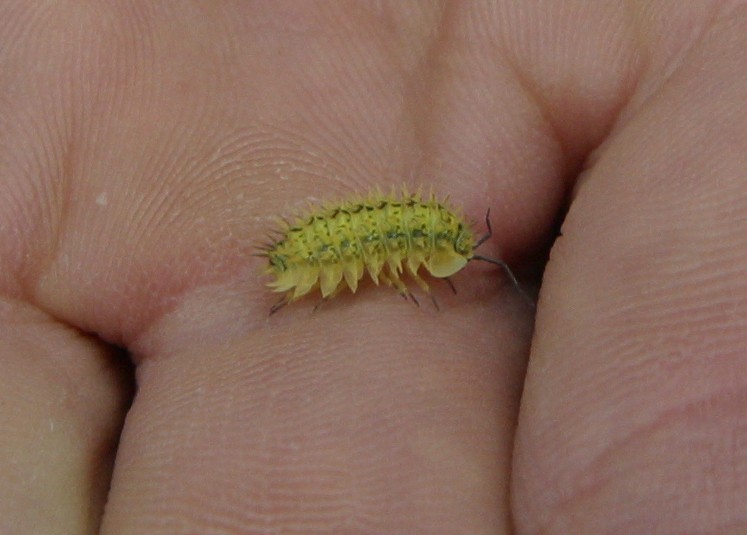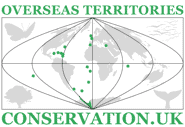
Saint Helena 2015
The following article is written based on Felix Driver’s updates, and his photographs. He sailed from Cape Town on RMS St Helena in October 2015 to volunteer with the St Helena National Trust for nine months. He self-funded his travel. Felix graduated from Writtle College (University of Essex) with a 2:1 BSc in Environmental Conservation. This was the third overseas territory he has visited, following a sailing adventure in Pitcairn in 2011 and survey work in Cyprus Sovereign Base Areas in summer 2012. His journey was done before the completion of the airport.
October 2015
The journey on the RMS was wonderful. It was a long journey but a good way to get to know people, both expats and saints.
My arrival on the island was equally wonderful. We reached the southern corner of the island on Wednesday early morning, and then cruised anti-clockwise around the island to the north-western side where Jamestown is located. Jamestown is very attractive, resembling small Cornish towns such as Trebarwith Strand or Port Issac, with mostly Georgian terraced and detached town-houses situated either side of the road, then rising up the valley.
I have eaten well so far; food is plentiful but fresh produce is hard to get. I have, however, done the rounds and found how to get fruit and vegetables and have a good stock of apples, oranges, pears, pumpkin, cabbage, and potatoes. Islanders grow them too, so I think there are ways round things.
Due to the isolation of the island, the Royal Mail Ship resembles an extension of it, its movements operating almost in a bizarre lunar calendar, with the islanders and inhabitants (including me) operating on a time-scale that corresponds with where the ship is and what that means for us and the provisioning of fresh food and conveniences. Just like the sun’s rays, we dependently hope for the growing of food and the keeping of a positive temperament. With the ship as the only lifeline to the outside world, its presence and disappearance beyond the horizon causes us to longingly await its return and to count time not just in months but in numbers of ship visits.
November 2015
I am working as the Community Forest long-term volunteer with the St Helena National Trust. St Helena could be described as one of the most devastated islands in the world from an ecological standpoint. Since 1502, when it was discovered, it became of strategic importance for water-supply on the trading routes between Europe and Asia for the importation of spice and other commodities. It played a key role in the Royal Navy’s role in ending the slave trade. St Helena served in the same capacity that many remote islands do, as a source of replenishment to visiting ships. It was the introduction of non-native species for the purpose of provisioning ships (as well as accidentally) that has caused some of the major ecological problems St Helena today. However, with few records (except sub-fossil) of how the island was prior to exploitation in its natural state, there is a lot of educated guesswork.
Introduced animals are a big problem – for example grazers such as rabbits and goats. Rabbits are prolific breeders and continual grazers, eating the shoots of seedlings and ringing the bark of established plants. Goats not only graze but also trample on vegetation in their constant search of food. Other introduced animals threaten plant growth in much the same way, and domestic cats have affected the Island’s endemic flightless (and flighted) bird population, which had no natural ground predators.
Culling is therefore one of several solutions to try and reduce the spread of grazers and help return the island as close as possible to its original undisturbed state. Attempts to do this are being kept within the perimeters of Millennium Forest on the northwest side of the island. This is the single largest conservation effort on the island to restore the island’s deadwood forests (thought to have consisted primarily of gumwoods, the dominant plant species of St Helena) to the dominant coverage they once had over much of the northeast side of the Island.
Around 40 endemic plants remain on the island, consisting of ferns, broad-leaved plants and several grasses. Many of these species are restricted to a few sites within the Island’s cloud forest – and, in some cases, to only a small number of individual plants.
Much of the conservation effort of the St Helena National Trust has been concentrated on species-specific projects. However, there has been a recent shift to thinking at a landscape- and ecosystem-level. The aim is to rehabilitate degraded landscapes by removing non-native species, which have become invasive, and the replanting of endemic and native species. Once plant communities are established, the aim is to allow them to develop themselves, and for succession to occur with minimal intervention. It is hoped too that the community forests being established in various areas around the Island can link together as a network to increase coverage and resilience.
Propagation and seed-collection from remaining wild specimens has been crucial to allow these endemic plants to be grown. One example is the endemic St Helenian redwood. Considered to be extinct in the wild, propagated plants of the parent specimen came from just one single tree. Unfortunately, this one tree was diseased and the planted redwoods are struggling. This is true also for the St Helenian dwarf ebony. The only wild specimens are just two plants on a remote cliff.
In addition, I am also assisting UK-based non-government organisation, Buglife, with their Bugs on the Brink Darwin-Initiative-funded project. I am receiving training for IUCN Red-Listing from the leading entomologist David Pryce. He is leaving the island in two months’ time and I have the opportunity to learn how to submit listings for endangered species under the IUCN process.
I am now also working with the Environmental Management Division (EMD) of the Government by assisting with ornithological surveys on Egg Island (a rock-stack off the coast).
December 2015
This week, I have been helping out the Biosecurity Team in plant quarantine. In my spare time, I spend weekends either working part-time at the Consulate Hotel as a barman, or taking long hikes with friends to remote and historic locations or hanging-out with Saints (i.e. local inhabitants) at the wharf, swimming or fishing and enjoying the bars of Jamestown. I find, though, that I am happier being mostly busy, as it helps with the moments when I feel slightly claustrophobic and isolated here, as I do get like that.
I am now involved with EMD on an ornithological study, researching the population dynamics and behavioural ecology of seabirds inhabiting the offshore stack of Egg Island, for it is conceivable that the native Madeira storm-petrel that is known to reside on the island may actually be a separate endemic species of storm-petrel found only on St Helena!
The project is in its third year now, and each year involves a research team visit to the island for 10 consecutive nights, to trap birds that live there. This involves use of mist-nets, which are set up between 17:30 hrs and 23:30 hrs at four locations. Being involved with this task taught me the important balance of being both gentle but firm with the birds that are caught. While the bird flaps it can get into a tangle. This is limited by being quick to them when they become trapped in the net. Once they are in the net, you can remove them by holding them in the correct manner and making sure that their wings are comfortably held. So you can overpower them without hurting them or them flying off!
The bird-measurer and ringers consisted of a team from both EMD and the Ascension Island Conservation Department, who came from Ascension especially for the study. Their task included identification of species and age, weighing, measuring upper leg length, lower leg length, head-and-beak length, beak depth, wing length, tail length etc. and recording state of moult. Some examples of the birds we caught were: Madeiran storm-petrels, brown noddies, sooty terns and white-faced terns. I worked as the scribe on several occasions, which, although tedious and uncomfortable when sitting on a rock precipice for hours writing down measurements, gave me a good understanding of the range of sizes of the birds, and I started to see patterns in the data.
Getting on and off the island in the dark was tricky, but we had the help of Shermen who dropped us off at the rock each afternoon. This involved climbing from a ledge on the edge of the rock and, as the swell lifted the small skiff, we would leap into the boat and be taken to the bigger boat that took us to Jamestown Harbour. I made four trips to Egg Island but, had I been able, I would have done more; just working days and nights was very hard work!
Today, I have just returned from High Peak, a site on the Island, along with just a few other spots such as Diana’s Peak, with plant communities and associated habitat features, that come closest to how the Island looked in 1501. At High Peak, there are black cabbages, ebonies, Jellico, St Helenian lobelia, tree-ferns, large bell-flowers and a diverse array of invertebrates that depend upon these plants. The Critically Endangered spiky yellow woodlouse remains only on this patch of cloud forest, living off plants that cover an area smaller than a tennis-court. Conservation efforts aim to protect this last remnant of the Island’s natural state by expanding the site outward.
One method of conserving this habitat is the collection of seeds. I was involved with seed-collection for part of today, with the careful collection of the black cabbage seeds. Black cabbages are of the botanical family Asteraceae, the daisy family, which has had the greatest success of all botanical families on the Island, with 9 of the Island’s 30 (approx.) endemic dicotyledonous plants being of this family.
Last week, I worked also at a site that has the remains of the last naturally seeded she-cabbage Lachanodes arborea, which consists of a stump and some dead wood. The site is in a clearing between two pasture fields and is being used to try and encourage its growth under a re-planting programme. Conservationist Rebecca Cairns-Wicks and the National Trust’s entomologist David Pryce are working hard to move remains of this dead wood to the other re-established she-cabbage communities around the island to preserve possible dead-wood-dependent invertebrates that may benefit the growth of she-cabbages. Sadly, an endemic weevil that lived off she-cabbages and assisted with pollination is thought to be extinct, having not been seen since the mid-1990s, but through efforts like this it is possible it may be rediscovered.
